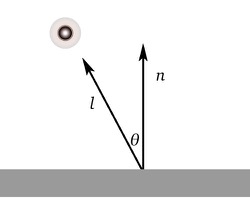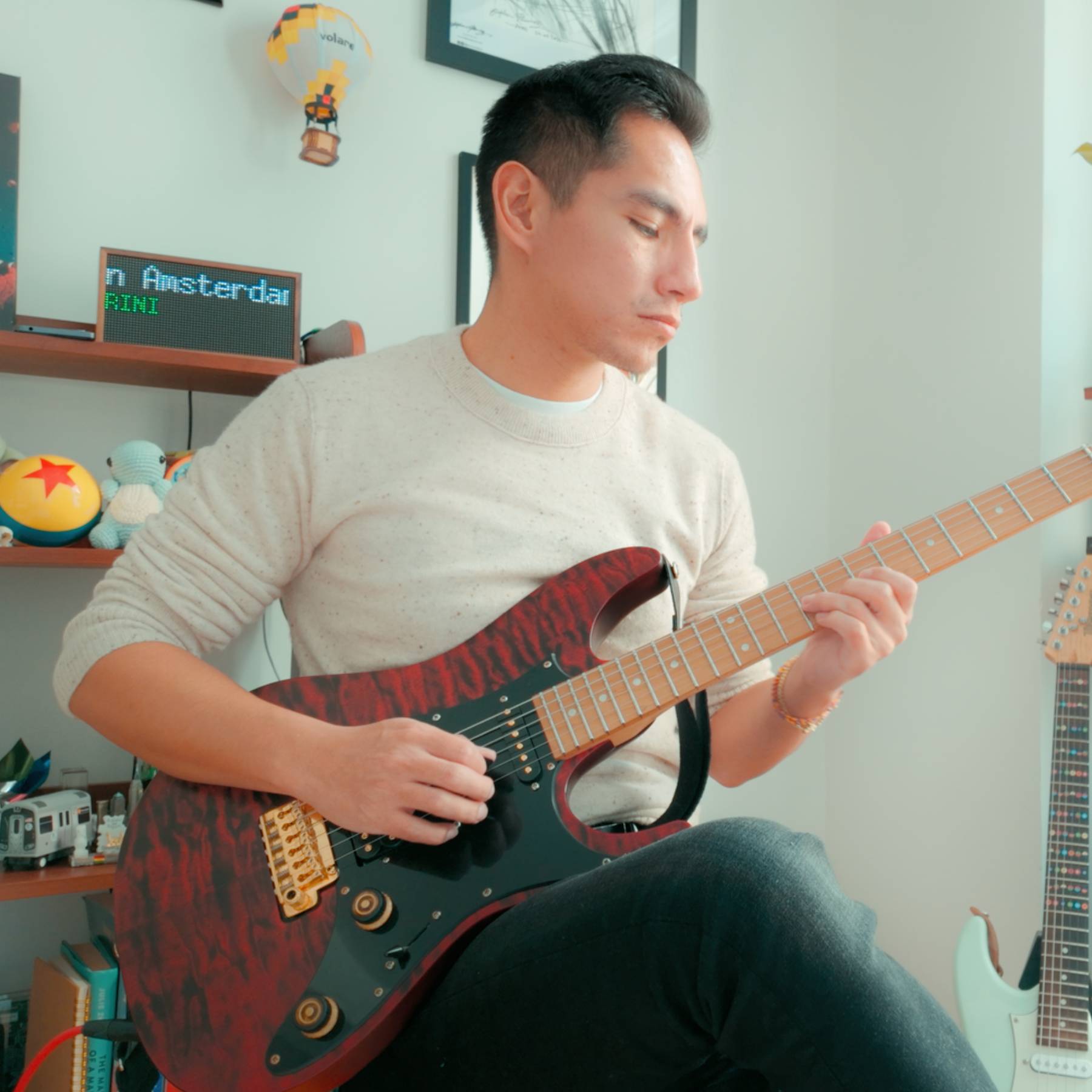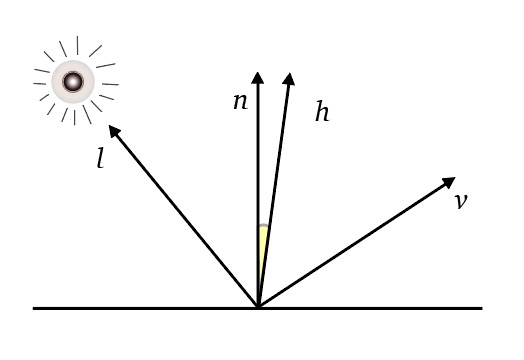Many objects, for example, wood and paper, will have a surface that is not shiny. Such objects can be modeled using the Lambertian Model.
Lambertian Shading Model
A Lambertian object obeys Lambert’s cosine law, which states that:
The luminous intensity of a surface is proportional to the cosine of the angle between the surface normal and the direction of the light.

Note that the model does not depend on the distance between the light and the object. This assumption is equivalent to saying that the light is “distant” relative to the object size, which is often a directional light.
When the light hits the surface, a portion of the light gets reflected. This is controlled by the diffuse reflectance
Ambient Shading
Some surfaces that receive no direct illumination in real life are perceived as having a color distinct from black. This is because the light is actually reflected by other surfaces. In addition, there’s sometimes skylight, which increases the amount of light reflected.
A common trick is to put a dim light at the position of the eye so that all visible points receive some light. Another approach is to add an ambient color



